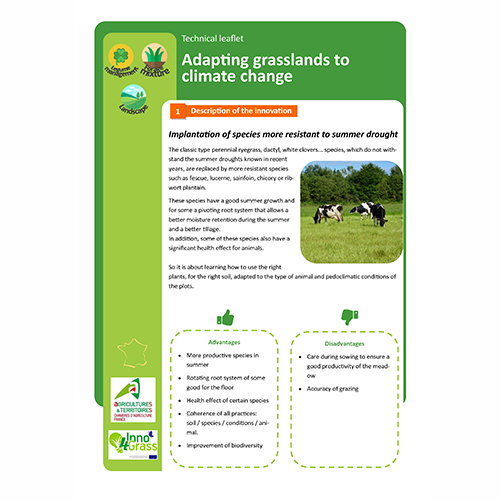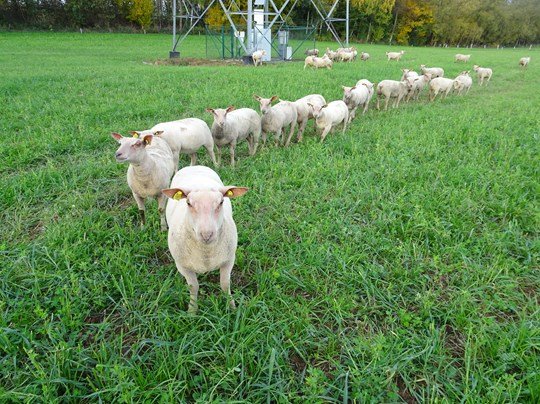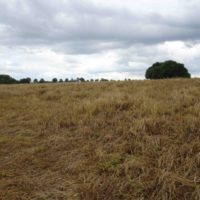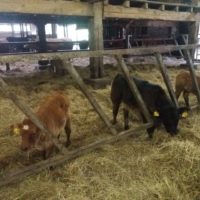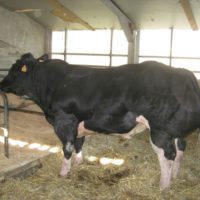Pasture of intercultures by sheep
Description
General context
Points of attention for who wants to embark on the adventure!
The grazing of winter covers by sheep is interesting from an agronomic point of view as well as from economic, ecological, and even societal aspects. Sheep use the green cov-er without negative impact on the soil and its structure, quite the contrary, while saving a mechanized passage. They also give back nitrogen and other nutrients, unlike an ex-ported mowing, and in a form more quickly assimilated by the next crop.
On the sheep side, the grazing of covers results in high animal performances: the cover largely meets the needs of the animals both in the maintenance, or in pregnancy and in lactation. Even the fattening of lambs can be considered on these areas. At the sanitary level, no prob-lem of parasitism exists: sheep graze healthy plots. And the image of sheep grazing field plots has an undeniable positive effect on the image of agriculture for the citizen.
The practice of grazing winter intercultures by sheep is respectful of the environment and soils in many ways. For instance:
- It is alternative to glyphosate;
- There is no need of mechanized passage for grinding the cover;
- Organic fertilization through the transformation of biomass into organic matter via the droppings of sheep, trampling “sheep foot”.
While cover crops are still largely seen as mandatory crops and not as service crops beneficial to the farming system, giving them value through sheep grazing represents an economic, agronomic and environmental opportunity for sheep breeders and field crop farmers. To make it a win-win partnership, you need to be attentive to different aspects: What can you implement? When? Which partnership to develop? How? How to manage your pasture? What content to give to the contract between breeder and farmer?
Description of the innovation
Agronomic aspects
Cover management is essential. It must be considered as a cash crop. In view of the time and the money invested, we must think about its place in the rotation and look after its implementation so that it gives the expected results. Fodder produced by a catch crop (grass-legume-cruciferous association) is very interesting in terms of nu-tritional quality, at a time of the year when grass availability decreases rapidly with decreasing temperatures. It is the quality of the cover which makes it possible to ensure the needs of the ewes in the maintenance, in pregnancy and in lactation without adding concentrates. Also the adaptation of the cover to the local condi-tions is essential. It requires implementing trials and monitoring over several sea-sons. It’s about building a knowledge base.
The sowing dates are paramount, especially in the colder regions. It will be neces-sary to implement the cover as soon as possible after the former harvest. Implanta-tion should be neat and performed in good conditions. To avoid germination prob-lems, care should be taken with the quality of the seeds used and the sowing tech-nique. Producing your own mixtures allows you to adjust the proportions and save money on seed purchases.
Good to know
Sheep can also very well value cereal regrowth or yet more rapeseed regrowth. Some breeders also use sheep to depress their cereals in the spring. They use high livestock density per hectare (1000 ewes per ha) in 24 hours to avoid damaging the crop. Cereals height pass from 20 cm to 5 cm. There is a positive impact on cereal diseases (due to the absence of leaves), a better crop tillering, less crops lodging (final height reduced by 15 cm) and a final grain yield similar to ungrazed plots.
Health and zootechnical aspects
In the case of intercrop grazing, sheep graze healthy plots. There is therefore no prob-lem of parasitism. On the other hand, cases of lameness can appear. They must be watched. Regarding the feed transition when the sheep get into the plots of intercul-tures, there is, a priori, no worries. But you must ensure that the sheep come into the cover crop full stomach.
The fattening and finishing of the lambs can be carried out entirely by grazing on in-tercultures. Intercropped pasture is also potentially ideal for “flushing” ewes (enriching the ewes’ diet to improve their condition before and during the rutting sea-son). This practice aims to increase the ovulation rate and thus the lambing rate. Here too, the quality of the cover is essential. The mixture to be sown will depend on the date and the duration of grassland, the desired grazing period (autumn-winter or spring), the previous and following crops.
In each situation, it should be taken care to seedlings and incorporate legumes and non-bloating species. For an autumn pasture, for instance, a combination of white oats, clovers and vetches or peas is well suited. The addition of cruciferous species, such as forage rapeseed and forage or Chinese radish, has a positive impact on feed and soil structure. For a spring pasture, we will favour rye, triticale or ray-grass with a legume like crimson clover. The more diverse the coverage, the more secure the overall performance will be. An association of 3 to 6 species is recommended.
Grazing management
Several solutions of temporary electric fencing exist: nets and wires. The nets are rel-atively arduous and long to install. Electric fences with 3 or 4 wires are a good solu-tion for the contention on field crops. There are installation and removal systems that are very practical and very quick to implement. This goes from the classic wire crank roller to the automatic system on quad. Tumblewheels or quad and rappa machine are the most common.
Adoption criteria
Geographic proximity
Geographical proximity is a sine qua non condition for a sustainable stockbreeder-farmer partnership.
Contractualization of the breeder-farmer partnership
When animals graze on another farmer’s plot, a grazing contract is required to comply with the nitrogen regulation. In order to lay the foundations for a sustainable partner-ship, the potential costs and benefits of this partnership (economic, environmental, social impacts, etc.) need to be evenly weighed. It is also important to work on the trust and quality of the relationship in order to perpetuate it. All the technical ins and outs about intercrops grazed by sheep, both for the stockbreeder and the farmer, must be put on the table.
The valorization of cover crops by sheep grazing is the subject of relatively recent work in Wallonia. The dynamic is driven by the College of Producers to create / ex-pand partnerships between farmers and breeders, in order to promote winter inter-cropping by grazing sheep.
This practice is a case study of the Horizon 2020 DiverImpacts project (https://www.diverimpacts.net/case-studies/case-study-4-be.html), which aims to promote crop diversification within the European Union. The Walloon partners in this project are the College of Producers and the CRA-W, Walloon Agricultural Research Center. It is supported by the Walloon Rural Development Network in its implementation as an Operational Group.
Additional information
| Domains of innovation | animal feeding management, farm system, forage mixture, grazing management system |
|---|---|
| Main types of animal | beef cattle, dairy cattle, dairy goats, dairy sheep, meat sheep |
| Country | Belgium |
| Product type | Technical leaflet |
| Language | English, French |
